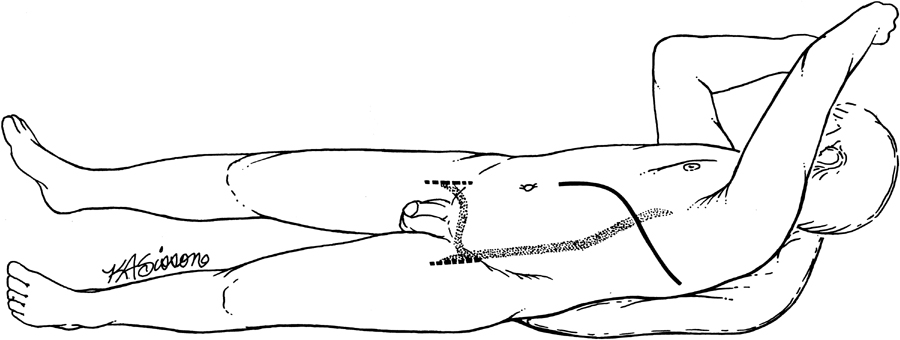The patient is positioned to maintain adequate surgical access to both femoral arteries. The pelvis is left reasonably flat, with a rotation of the thorax to about 30 degrees (Figure 1). A thoracotomy incision is made in the sixth or seventh intercostal space and brought across the costal cartilage for several centimeters onto the abdominal wall. Remove 1 or 2 centimeters of costal cartilage with the curved Mayo scissors for a less painful closure. After the thoracic cavity is entered, the diaphragm is incised for several centimeters in a radial fashion. Later, the bypass graft will pass through this short incision.
Descending Thoracic Aorta to Femoral Bypass
Surgical Technique
![]()
Stay updated, free articles. Join our Telegram channel

Full access? Get Clinical Tree


Thoracic Key
Fastest Thoracic Insight Engine

